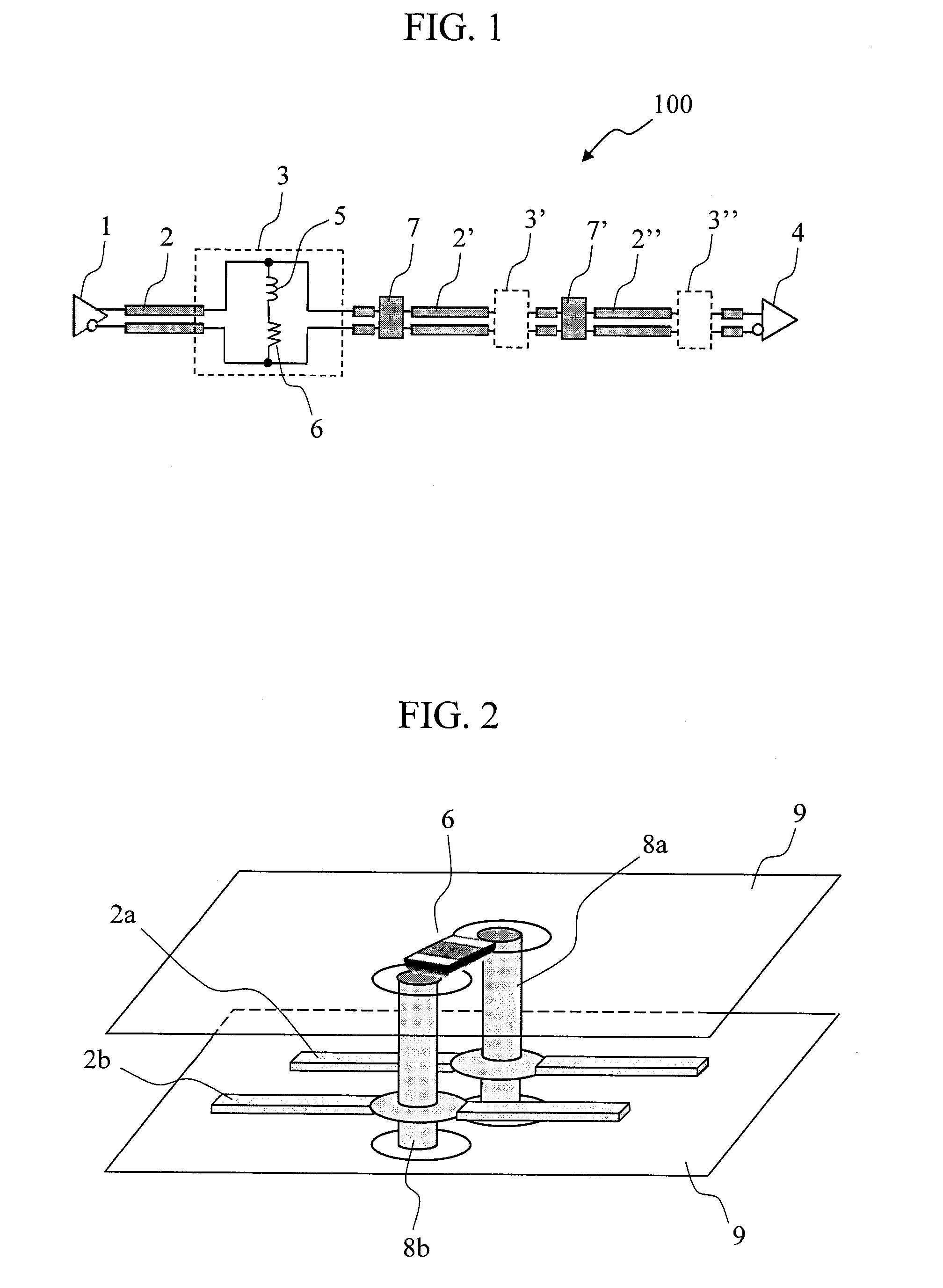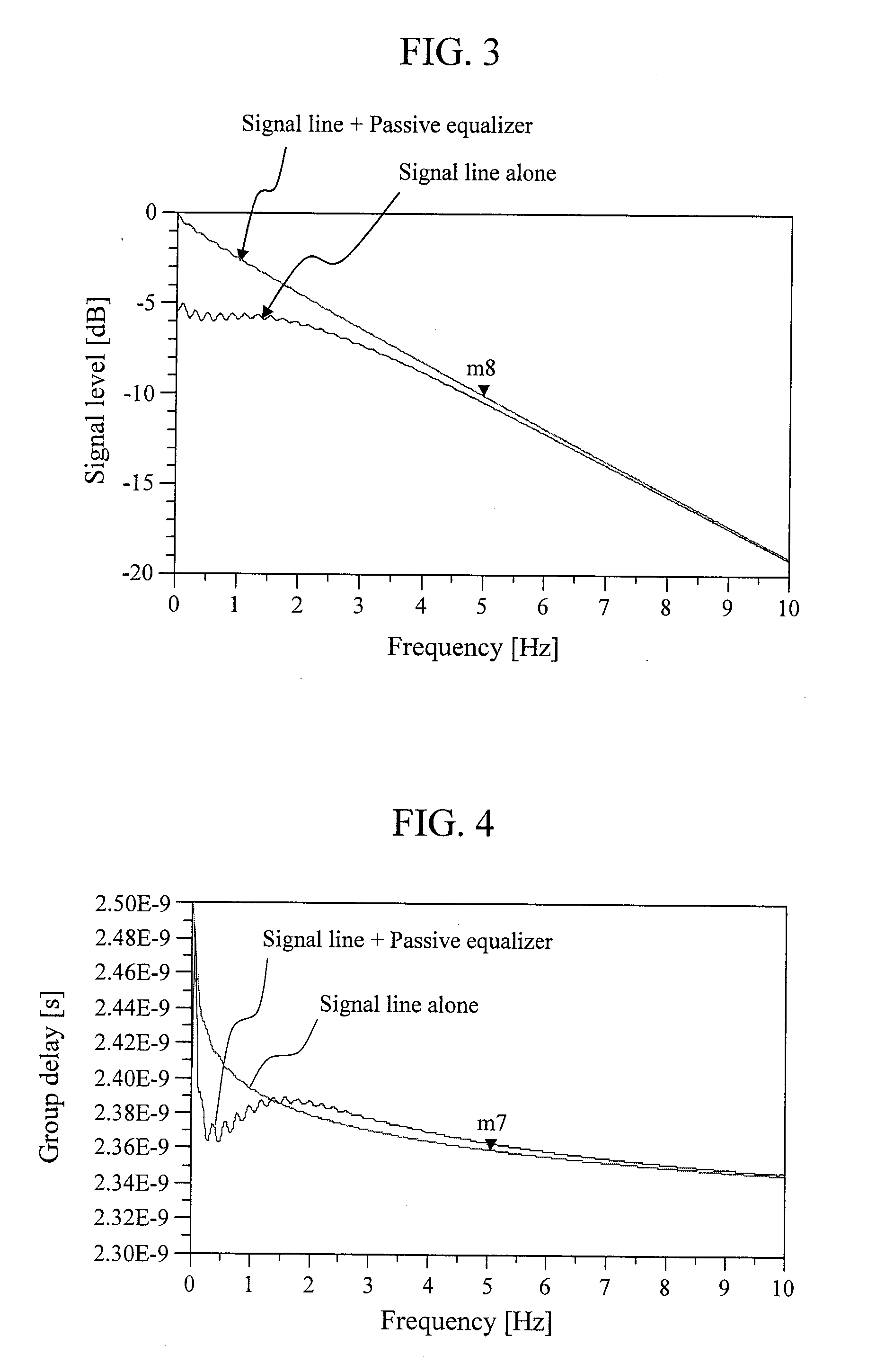Equalizer Circuit and Printed Circuit Board
- Summary
- Abstract
- Description
- Claims
- Application Information
AI Technical Summary
Benefits of technology
Problems solved by technology
Method used
Image
Examples
embodiment 1
Summary
[0039]As described so far, the equalizer circuit 100 according to the present Embodiment 1 includes the passive equalizer 3 which is connected in parallel to the signal line 2, and the inductor 5 of the passive equalizer 3 is made up by using a conductor portion formed on the side face of the through-hole 8 which penetrates the printed circuit board 9. By adjusting the length of the through-hole 8, it is possible to adjust the inductance of the inductor 5 in accordance with the characteristic of the signal line 2. This eliminates the need of replacing the components of the passive equalizer 3 for each characteristic of the signal line 2, which is advantageous in terms of the flexibility in configuration, manufacturing period, cost, and the like.
Embodiment 2
[0040]FIG. 6 is a perspective view of the passive equalizer 3 included in the equalizer circuit 100 according to Embodiment 2 of the present invention. Since the configuration of the passive equalizer 3 is similar to that o...
embodiment 2
Summary
[0046]As so far described, in the equalizer circuit 100 according to the present Embodiment 2, the through-hole 8 is provided at a position which is apart from the extension line of the signal line 2 and where it does not intersect at right angles with the signal line 2, and the signal line 2 is configured to be diverted from its advancing direction in the vicinity of the through-hole 8 and to be brought into contact with the conductor portion. By this configuration, even when the size of the resistor 6 which is a chip component is larger than the disposition spacing of the signal line 2, it is possible to make up an equivalent circuit to that of FIG. 1.
embodiment 3
[0047]FIG. 7 is a perspective view of the passive equalizer 3 included in the equalizer circuit 100 according to Embodiment 3 of the present invention. Since the configuration of the passive equalizer 3 is similar to that of Embodiment 1 excepting the peripheral configuration thereof, hereafter, the configuration shown in FIG. 7 will be mainly described.
[0048]In FIG. 6 which is described regarding Embodiment 2, it is described that the through-holes 8a and 8b are connected by the electric wiring 10. While this electric wiring 10 in principle connects between the through-holes 8a and 8b in a linear fashion, a bypass wiring as shown in FIG. 7 may be adopted as needed. In this case, the length of the electric wiring 10 becomes longer than that in FIG. 6 and, as a result, the electric wiring 10 itself forms a significant inductance together with the conductor portion of the through-hole 8 as well.
[0049]Accordingly, when the length of the through-hole 8 is not sufficient, the electric wi...
PUM
 Login to View More
Login to View More Abstract
Description
Claims
Application Information
 Login to View More
Login to View More - R&D
- Intellectual Property
- Life Sciences
- Materials
- Tech Scout
- Unparalleled Data Quality
- Higher Quality Content
- 60% Fewer Hallucinations
Browse by: Latest US Patents, China's latest patents, Technical Efficacy Thesaurus, Application Domain, Technology Topic, Popular Technical Reports.
© 2025 PatSnap. All rights reserved.Legal|Privacy policy|Modern Slavery Act Transparency Statement|Sitemap|About US| Contact US: help@patsnap.com



